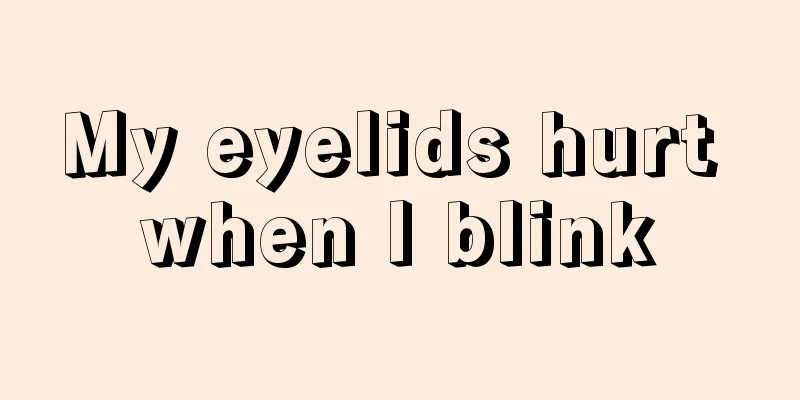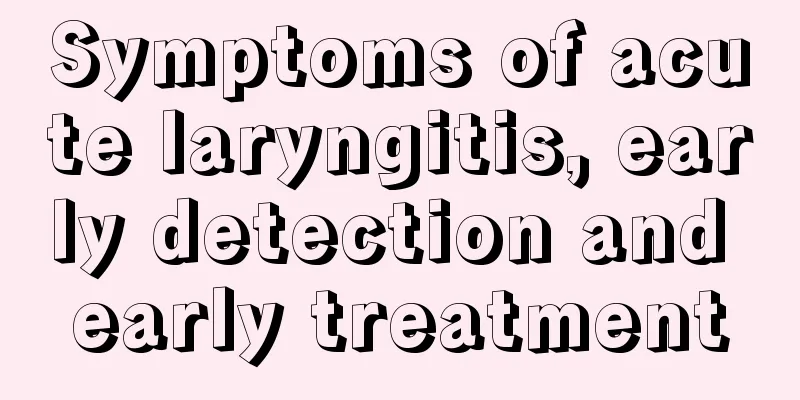My eyelids hurt when I blink

|
If we feel pain when we blink and our eyes are a little red and swollen, then we may have a disease called stye. Stye is a highly contagious disease. Children are a high-risk group. Adults may also develop this disease if they do not pay attention to their eye hygiene. After becoming ill, you can choose anti-inflammatory eye drops or tobramycin eye drops for treatment. Stye, also known as sty and hordeolum, is an acute suppurative inflammation of the sebaceous glands or meibomian glands near the eyelash follicles. There are two types of styes: internal sty and external sty: 1. External stye It is an acute suppurative inflammation of the Zeis gland. Initially, the eyelid margin shows localized congestion and swelling, and a nodule forms after 2 to 3 days. There is obvious swelling, pain and tenderness. Later, the nodule gradually softens and a yellow pustule forms at the root of the eyelashes, which breaks through and discharges pus quickly. Severe cases may have systemic symptoms such as chills and fever. 2. Internal stye It is an acute purulent inflammation of the meibomian glands. Its clinical symptoms are not as severe as those of external hordeolum, because the inflamed meibomian glands are surrounded by firm tarsal plate tissue. Yellow pus masses are often faintly visible on the surface of the congested palpebral conjunctiva, which may rupture and discharge pus into the conjunctival sac on their own. The opening of the meibomian glands may be slightly raised and congested, and pus may also be discharged along the palpebral gland duct. A few cases may rupture and discharge pus from the skin. If the tarsal plate fails to rupture and the pathogen is highly toxic, the inflammation will expand, invade the entire tarsal plate tissue, and form an eyelid abscess. treat 1. Early hot compress or magnetic therapy Promote infiltration absorption or rapid suppuration of nodules. 2. Surgical incision When the inflammation is under control and pus accumulates to form a fluctuating feeling, it can be drained by incision, and the necrotic or granulation tissue can be properly cleaned. Depending on the situation, placement of a drainage strip can be considered. After the inflammation subsides, if there is still residual granulation tissue or nodules left, surgical removal can be performed again. However, it should be noted that the skin incision of the external hordeolum should be parallel to the eyelid margin, and the conjunctival incision of the internal hordeolum should be perpendicular to the eyelid margin. Avoid inappropriate squeezing to prevent the inflammation from spreading into the orbit and cranium, causing orbital cellulitis, cavernous sinus phlebitis, meningitis and abscess, which may be life-threatening. 3. For stubborn and recurrent cases Autoimmune therapy is available. Patients with systemic fever and swollen preauricular and submandibular lymph nodes can be treated with antibiotics. |
<<: What to do if warts grow on eyelids
>>: What is the reason for the sudden swelling of the eyelids
Recommend
What should I do if my wisdom teeth turn black?
Wisdom teeth are a reaction to incomplete tooth d...
Is melanoma contagious?
When hearing about some malignant diseases, many ...
How to use hair wax
Hairstyle is very important to a person's fac...
The evolution process of gastric cancer
Gastric cancer is not a rapid transformation from...
What's the matter with peeling on the face
Our skin is very fragile in daily life. Many peop...
Prevention of intestinal adhesion after abdominal surgery
Gastric disease is a very common disease. Most pe...
What are the symptoms of osteosarcoma
The first symptom of osteosarcoma is joint pain. ...
What is lubricant
Lubricant is a medium that can reduce frictional ...
There are red bumps on the chest skin
In fact, we find that pimples not only appear on ...
What are the rapid diagnosis methods for breast cancer
When it comes to breast cancer, many people are n...
How to clean ears with hydrogen peroxide solution
Hydrogen peroxide is what we commonly call hydrog...
How to use medicine rationally for tongue cancer
If conditions permit, patients will choose drug t...
How can women prevent ovarian tumors?
How can women prevent ovarian tumors? Ovarian tum...
What are the dangers of endometrial cancer
We all know that endometrial cancer is a disease ...
What are the treatments for lung cancer? The 4 most effective treatments for lung cancer
Strictly speaking, the best treatment for lung ca...









